Nearly every Finn I encountered during Helsinki Design Week’s 20th anniversary festival remarked on how good the weather was. September, it seems, is an optimal time to visit the capital—chief among the reasons is that the Nordic city is brimming with exhibitions, gallery shows, new product releases, and architectural advancements, all in homage to good design.
And design was indeed infused in every moment of my journey, starting with my flight aboard the country’s flagship airline Finnair. (In business class, we’re talking Marimekko bedding and amenity kits as well as iconic Iitala porcelain and glassware for meals.) In between visiting iconic buildings like Finlandia Hall to the announcement of architects for the new Architecture and Design museum and sharing meals with creatives, these were my highlights from this year’s celebration of all things Finnish design.
An Afternoon at Studio Kukkapuro
 Courtesy of Studio Kukkapuro Annabelle Antas
Courtesy of Studio Kukkapuro Annabelle Antas
The first thing I noticed after arriving at Studio Kukkapuro, the longtime workspace and home of the late legendary designer Yrjö Kukkapuro and graphic artist Irmeli Kukkapuro, was that the air smelled like apples, fresh soil, and cedar. Then, the remarkable 200-square-meter concrete structure, designed in 1968, came into view: a dramatic roofline, walls of glass, primary colors. Inside, chairs on chairs on chairs—Yrjö’s primary canvas—were tucked into every corner, behind tables, scattered across the expansive open space. (He is probably best known for furniture like the Karuselli and Experiment Chair.) Both his and Irmeli’s materials, tools, and work are still present throughout.
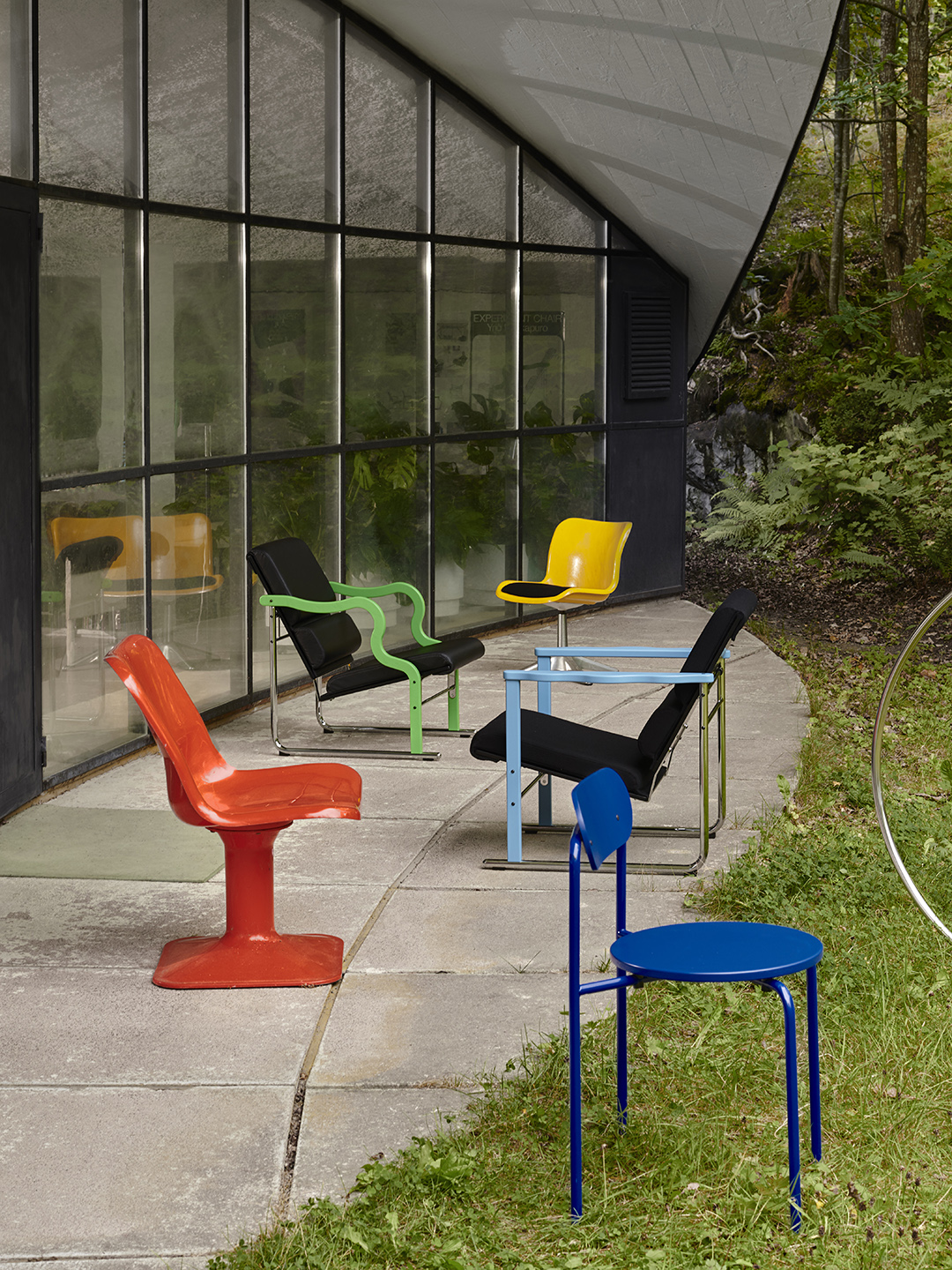 Courtesy of Studio Kukkapuro
Courtesy of Studio Kukkapuro
The artists’ daughter, Isa Kukkapura-Enbom, said her father considered “chairs as a platform for things to happen.” While she regales us with stories of her parents, a towering oak drops acorns outside; the noisy pitter-patter across the roof reinforces the unusual setting, and the connection to nature that is so present in Finnish design. The family is currently establishing the building as a museum and is already hosting students in the space, and anyone would be lucky to step inside.
Designer Laura Seppänen’s Concept House
The theme of this year’s Habitare, one of the main events of Helsinki Design Week, was Touch. The compelling main exhibition, made in collaboration with architecture practice Collaboratorio, explored ideas of imperfection and reusability through different materials and techniques. It featured what the studio calls natural concrete, made with unfired clay,which is a material they have developed as a sustainable alternative to conventional concrete. Beyond that central hub, I enjoyed strolling the halls and introductions to brands and artists like Hakola, Spais, Kira Catani, and others.
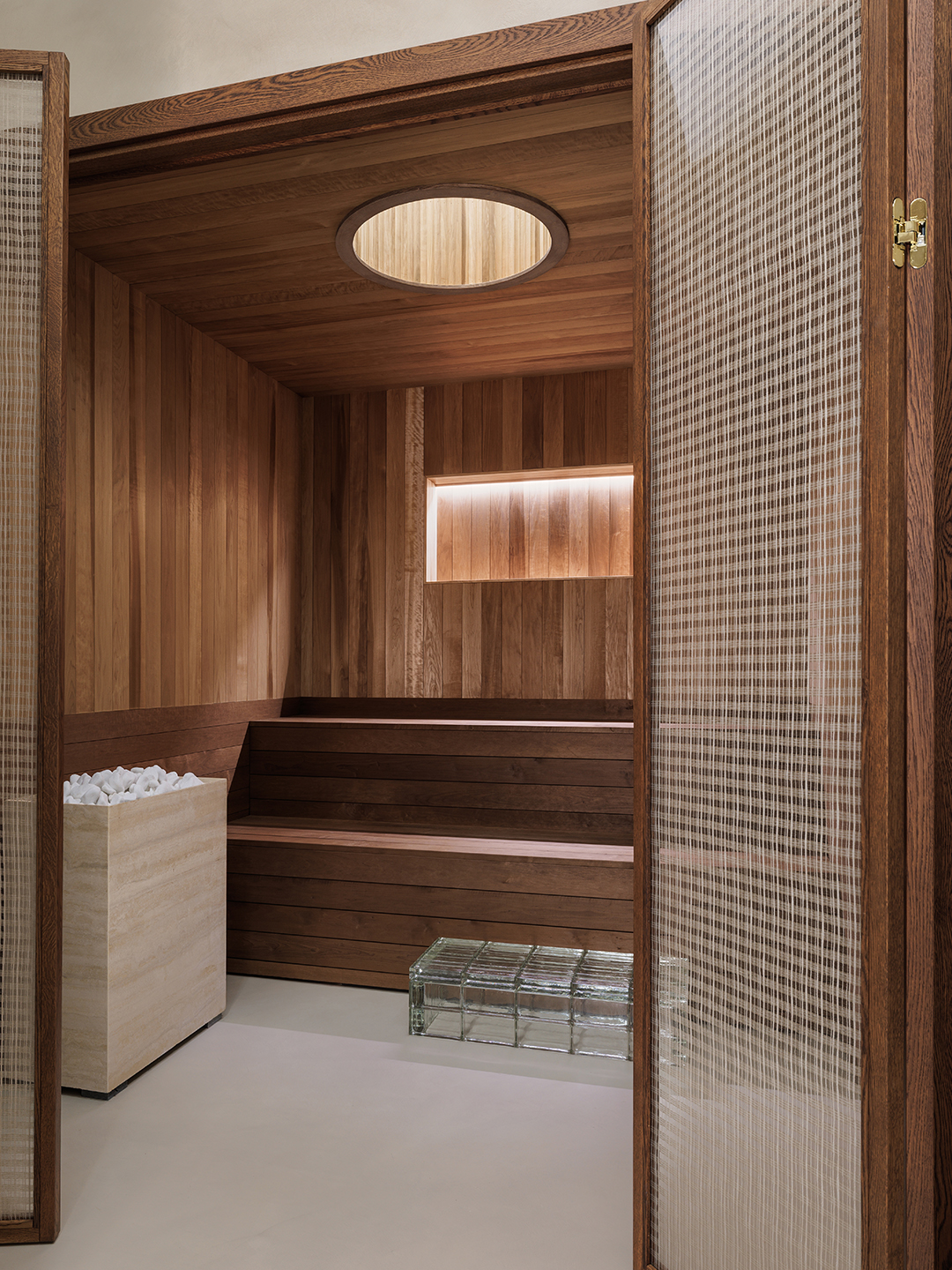 Interior design by Laura Seppänen, Photo courtesy of Habitare Mikael Pettersson
Interior design by Laura Seppänen, Photo courtesy of Habitare Mikael Pettersson
But I was really struck by how many smart ideas were tucked into designer Laura Seppänen’s concept house at the fair, entitled Habitare Neighbors. With more than 30 Finnish designers included, it featured a dark kelly green office, cool carved wood door handles, and a glass block kitchen island among the several rooms.
Two moves that stayed with me: Seppänen designed a luxe sauna that I immediately wanted in my own home. The sizable set of glass doors were enhanced with Dedar fabric, woven by Loftis Textile Studio, that had been brilliantly sandwiched in between to create a textural quality.
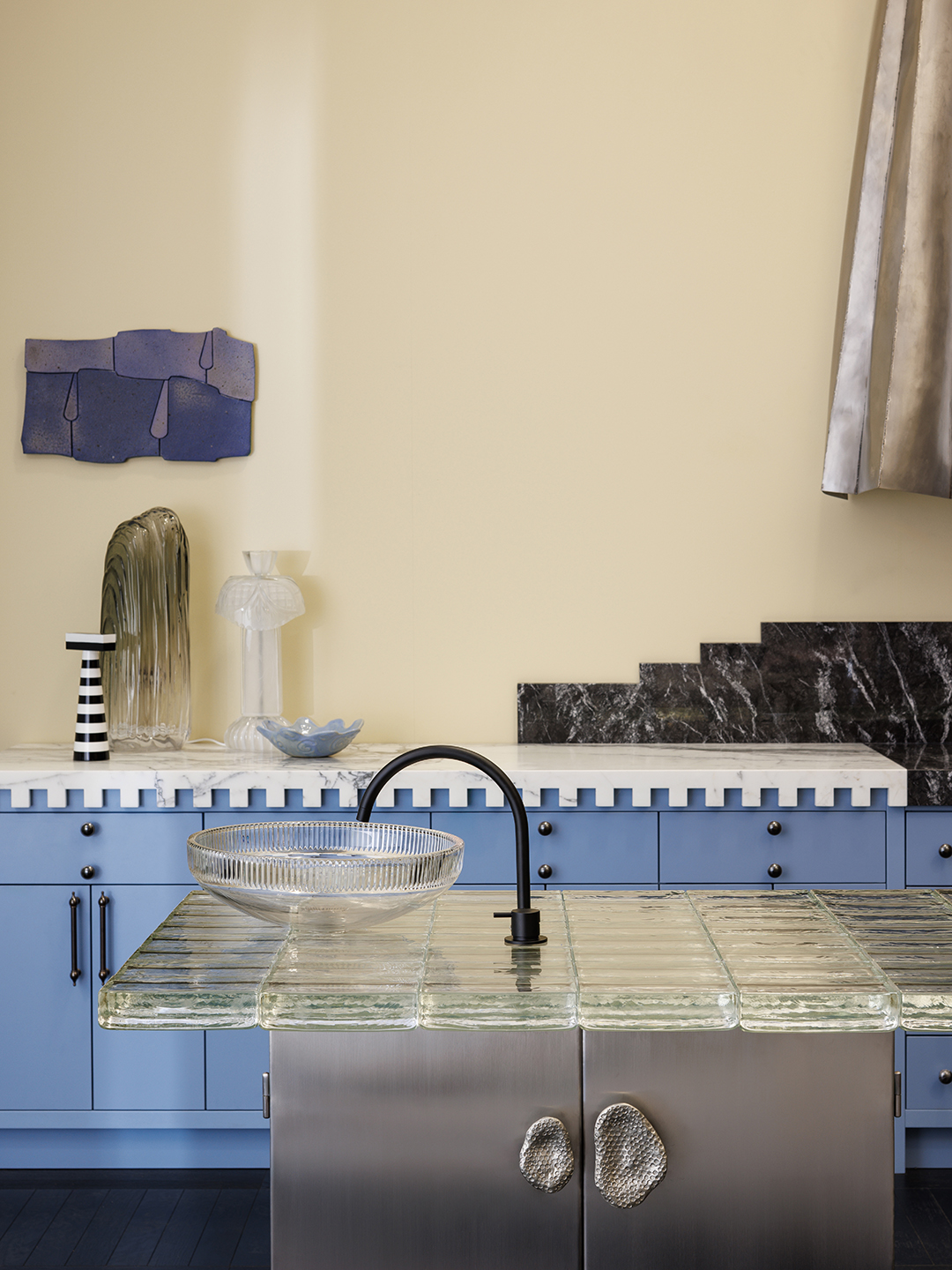 Interior design by Laura Seppänen, Photo courtesy of Habitare Mikael Pettersson
Interior design by Laura Seppänen, Photo courtesy of Habitare Mikael Pettersson
For the countertops in the kitchen, the designer was inspired by trim that she saw on a building while taking the Helsinki tram. Paired with sky blue cabinets, the combination proved surprising yet natural. Plus, I just love the combination of a Antrei Hartikainen mirror and Bette Eklund bench.
A Tour of the Tapio Wirkkala Rut Bryk Visible Storage
 Bryk & Wirkkala Visible Storage at EMMA – Espoo Museum of Modern Art, Photography by Ella Tommila Ella Tommila / EMMA
Bryk & Wirkkala Visible Storage at EMMA – Espoo Museum of Modern Art, Photography by Ella Tommila Ella Tommila / EMMA
At the Espoo Museum of Modern Art (EMMA) I was lucky enough to get a guided tour of the institution’s holdings of legendary designers Tapio Wirkkala and Rut Bryk, all from their granddaughter, Petra Wirkkala. She’s the managing director of the couple’s foundation, and if you don’t know the pair’s prolific output, it’s worth getting acquainted. There are nearly 2,500 items on display, from iterations of the Iitala Ultima Thule glassware, vibrantly-hued carafes and dishware, leaf-shaped trays, and unique Airam lightbulbs from the 1950s, as well as archival sketches and prototypes.
Finarte’s Anniversary Collection
 Courtesy of Finarte Aleksi Tikkala
Courtesy of Finarte Aleksi Tikkala
“If you want to keep your heart younger, you have to weave something,” says Eija Rasinmäki, the co-founder and matriarch of Finarte, a 40-year-old rug brand known best for embracing traditional Finnish rag rugs and ushering them into a new era. They have always been crafted from recycled materials, and Finearte continues to use leftovers from the textile industry under the direction of Rasinmäki’s daughter, Larissa Immonen Sharma, now CEO of the company.
To celebrate the milestone anniversary, Rasinmäki introduced new colors to the traditional craft, in ethereal hues of bubblegum pink and sky blue or soulful burgundy and dark teal. Plus, there were reissues—the electric wool Columbus, from the 1990s—and newer styles, like the Apollo and Kertomus, a wool-tencel rug designed by Marianne Huotari, a ceramicist and head of design at Finarte.
Prototypes from Young Finnish Designers
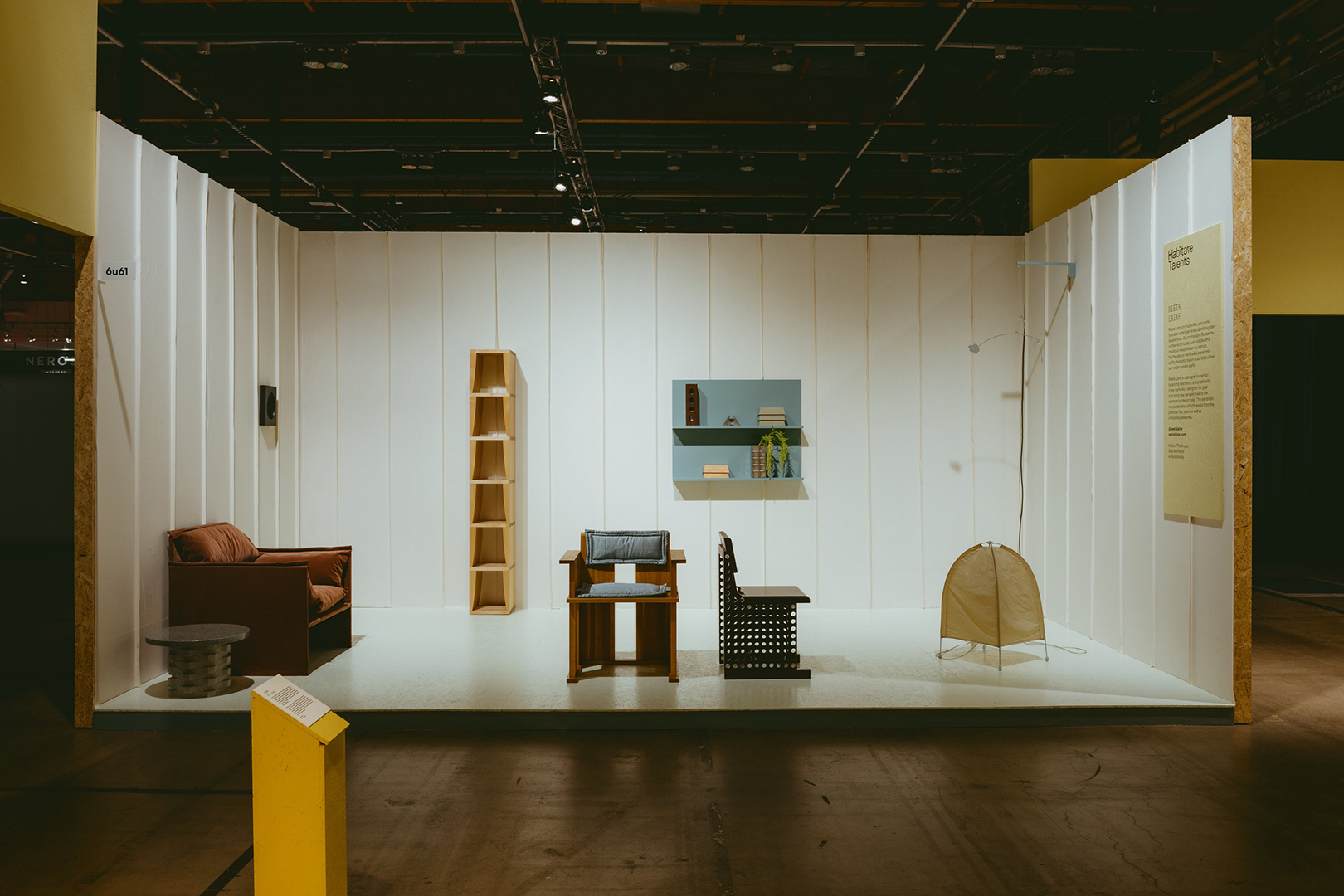 Product design by Reeta Laine, Photo courtesy of Habitare
Product design by Reeta Laine, Photo courtesy of Habitare
Even the newest creatives draw inspiration from longstanding Finnish traditions, materials, and natural elements. Two more highlights at Habitare were in the area designated to young and emerging designers called Habitare Protos and Talents. Among the innovative material applications—a borosilicate candle chandelier, lighting inspired by hardware stores, and woven wood sconces—I was particularly drawn to the practices of Lennart Engels and Reeta Laine.
Engels’ work coalesces around discarded sauna stones in his design laboratory Sauna Stone Lab. Through his research, he has been able to develop a geopolymer material that makes this would-be waste into candleholders, door handles, and incense holders. (An interesting anecdote I overheard in Helsinki: there are more saunas than cars in Finland.)
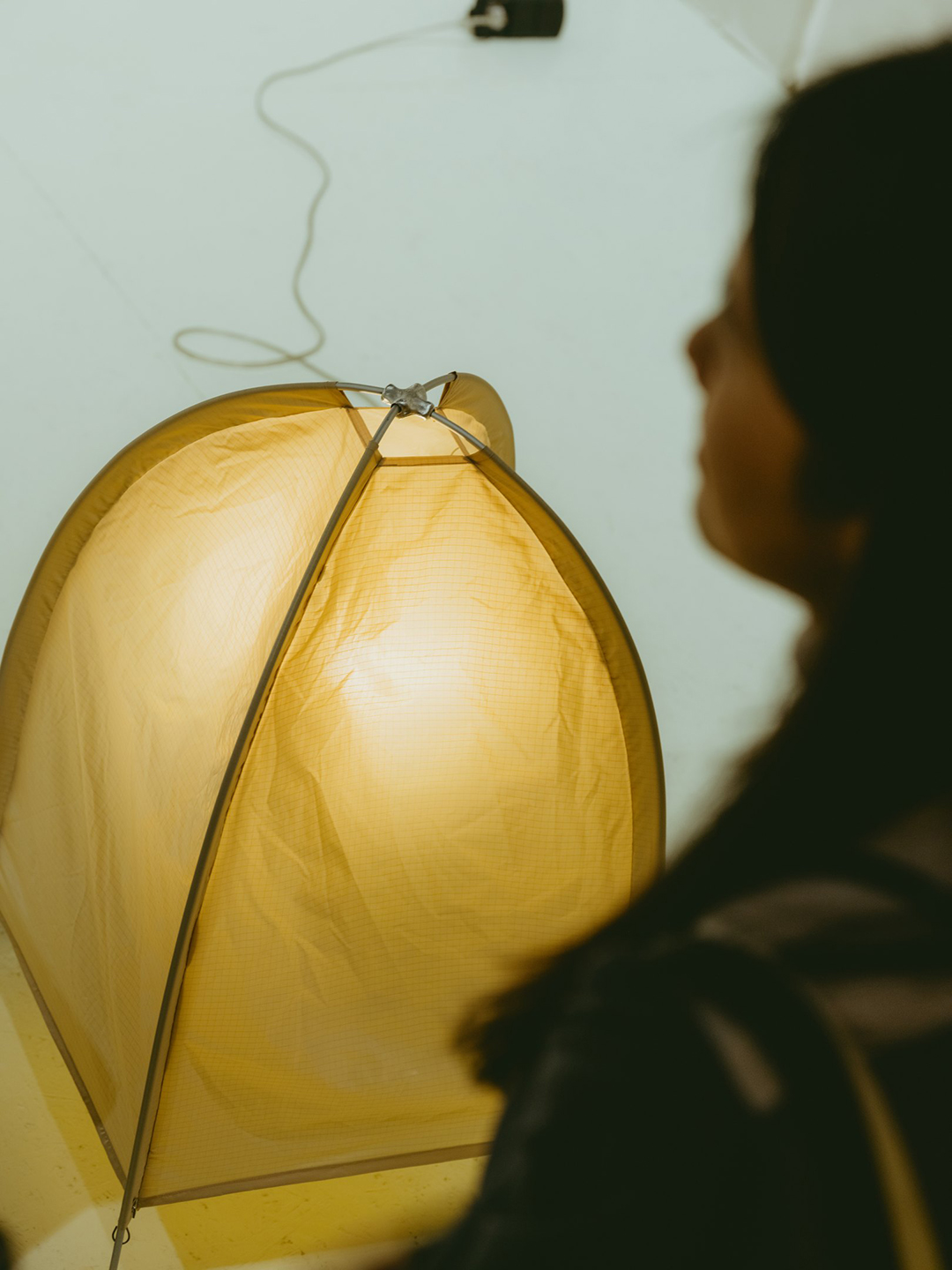 Product design by Reeta Laine, Photo courtesy of Habitare
Product design by Reeta Laine, Photo courtesy of Habitare
Designer Reeta Laine worked in Nina Bruun’s Copenhagen office for five years before returning to Finland to start her own studio, which reimagines everyday items in subtle yet thoughtful ways. I was drawn in to her work by the Ghostly Lamp, inspired by the shape of tents and made with recycled ripstop and aluminum, as well as hand-cast aluminum joints. But other products—a more sculptural tea light holder, roofline-inspired trinket boxes, an elegant flat-pack side chair—are equally intriguing. I’m excited to see how her career evolves.
A Morning with Artek and Marimekko
 Photo courtesy of Artek + Marimekko Marc Eggimann
Photo courtesy of Artek + Marimekko Marc Eggimann
I missed the sneak peek at Artek and Marimekko’s collaboration during Copenhagen’s annual design festival, so it was really nice to get up close and personal with the pieces in Helsinki as they launched globally. The two iconic Finnish brands teamed up to bring printmaking to birch furniture by applying classic Maija Isola designs to Aalto’s Stool 60s and Bench 153Bs. Artek Managing Director Marianne Goebl demonstrated how a marquetry technique, and alternating the wood grain, gives the flat surface dimension and allows the wood to seemingly shimmer in light. P.S. Alongside the classics, the Artek store on Keskuskatu is filled with contemporary designers and limited editions—it’s worth a stop if you’re in town.
